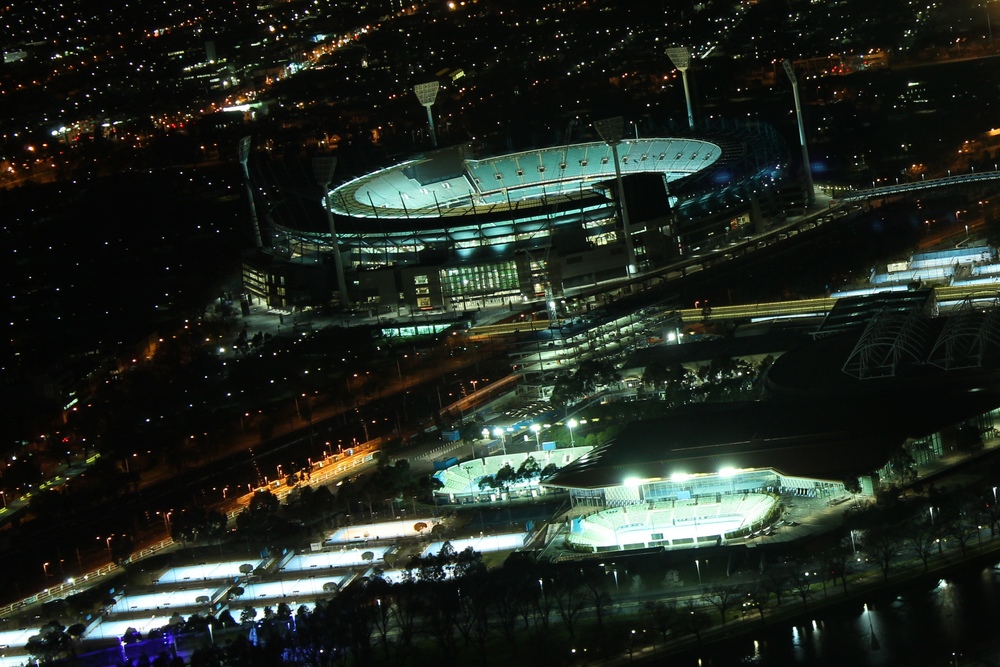If you take a walk around Melbourne at night, you don’t need a torch. Our streets are brightly lit with streetlights, headlights, advertisements, security lights and floodlit buildings. From the air, Melbourne is a spectacular labyrinth of white and gold. But while light at night has benefits, it can cause harm to wildlife – and to us.
The transformation of night
For billions of years, light has been a reliable signal of time. Sunlight indicates time of day, prompting the dawn singing of songbirds. Day length indicates time of year, triggering seasonal behaviours in birds, mammals and insects. These natural light cycles are possibly the most predictable environmental cues alongside which life has evolved.
Artificial light has completely transformed the night environment. It even lights up our skies. Today, more than 60% of Australians live under skies that are perpetually brighter than a full moon. In evolutionary terms, artificial light is an extremely recent, rapidly growing phenomena. Take, for example, sports matches after dark. Night-time sports matches became possible less than 140 years ago and Melbourne’s first floodlit footy match was only 80 years ago. Today, sporting venues around Melbourne are floodlit every night, adding to the already brightly lit night skies.
Impacts on wildlife
This kind of artificial light has noticeable effects on animal behaviour. Birds in brightly lit urban areas begin singing up to 1.5 hours before sunrise, whilst some species’ perception of day length is affected, causing urban animals to breed earlier in the year. Some bats avoid light at night, which limits when and where they can forage. Other species might be attracted to light, such as the “overabundant” seagulls at the MCG.

The impacts of light go deeper than behaviour, too. Light has physiological effects, mainly through its effect on melatonin. Melatonin is an ancient hormone, found in all organisms, from bacteria to humans. Light suppresses melatonin production, so that the levels of this hormone are high at night and low during the day. In birds and mammals, this daily pattern in melatonin regulates other day-night (or circadian) rhythms, such as sleep.
Recent research indicates that even dim light at night, such as light in an urban environment or from an e-Reader, can suppress melatonin production. This has huge implications for both humans and wildlife. Besides affecting circadian rhythms, melatonin also has effects on the immune system, seasonal reproductive function, and ageing. There is even evidence to suggest that low melatonin levels increase the risk of breast cancer.
Light at night is not just a problem for major cities, either. Brighter nights are being experienced across Victoria and even in developing countries. Worldwide, night sky brightness increases by an average of six percent every year. For ecologists, astronomers, health practitioners and many others, this is a growing cause for concern.

So what can we do?
We can start by questioning the way we use light.
Firstly, we can ask if it is necessary. Light is not always serving the purpose that we think it is. For example, a recent report in Britain found no effect of street lighting on crime or traffic collisions.
Secondly, we can ask whether the lighting is efficient. Often, we are lighting up more than what is required, such as nearby parks, backyards or the sky.
Thirdly, we can ask if light is too bright. Our vision is often better than we give it credit for and bright lights can even make it harder to see due to glare.
Finally, we can consider the spectra of lighting. Light in the blue part of the spectrum has the greatest effect on melatonin production. It can also be particularly attractive to mosquitoes and moths. Consequently, in some situations light bulbs that emit less blue light might be best.
By using artificial light more efficiently and considerately, we can minimise the impact on Victorian wildlife, as well as ourselves. We might even get a better view of the night sky, adding to the allure of our already beautiful city and state.
Banner image courtesy of Annie Aulsebrook.


Leave a Reply